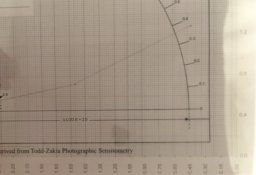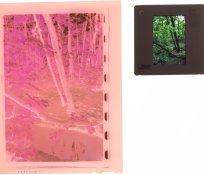-
Welcome to Photrio!Registration is fast and free. Join today to unlock search, see fewer ads, and access all forum features.Click here to sign up
- Home
- Forums
- Analog Workflow Forums (100% Analog/Traditional)
- Darkroom
- Color: Film, Paper, and Chemistry
You are using an out of date browser. It may not display this or other websites correctly.
You should upgrade or use an alternative browser.
You should upgrade or use an alternative browser.
Additive colour printing, understanding lamphouse?
-
A
- Thread starter Ted Baker
- Start date
Recent Classifieds
-
For Sale Nikon FE (blk) w/ 35-70 f/2.8 (Read)
- Started by Acere
-
Sold SOLD!
- Started by B.S.Kumar
-
For Sale FS: Linhof Master GTL / AMS 4x5 Camera
- Started by B.S.Kumar
-
For Sale Four H&Y Magnetic 4" Filter Holders and Four Cokin B&W Contrast Filters
- Started by Steve Goldstein
-
Sold Schneider Kreuznach Super-Angulon 165mm - 8x10
- Started by Guivd
Forum statistics
So the ultimate target medium of three color separated black and white negatives ... would have been Technicolor dye transfer. What’s that medium’s required density range?
No the ultimate target would be normal print film. The separation film in this instance is AFAIK when exposed and processed correctly operates identically to each respective layer in an inter positive, or duplicate negative film (at least in an effective or equivalent sense). For either archival purposes or perhaps special effects work. i.e. you should be able to use this film at any stage of a multi generational duplication process without any change from using the respective inter positive or duplicate negative films.
Hypothetically this film or at least the method could do the same for still photography, but I don't think there is modern day requirement to copy, distribute or preserve still film negatives in this way.
Last edited:
No. Nor is there such obligation for cine film.
The movie industry does use seperations for archival storage as they consider that cheaper.
Movie archives at best digitize movies and keep electronic files.
The movie industry does use seperations for archival storage as they consider that cheaper.
Movie archives at best digitize movies and keep electronic files.
- Joined
- Jul 14, 2011
- Messages
- 14,785
- Format
- 8x10 Format
Bill - Technicolor, as you know, employed a tricolor camera feeding all three rolls of b&w pan film in register. So any matched 3-frame set could in theory be used to produce an enlarged display or advertising print on dye imbitition film. More often you see these kinds of prints made from tricolor larger film copies of Disney illustrations than from tiny movie film separations. But Technicolor had its own infrastructure and supply chain for dye imbition work, as did the US military, the Color Corp of America, and probably Agfa in Germany at one time too. Eastman Kodak wasn't the only player around. And with respect to all of these, there wereinnumerable trade secrets. All the Technicolor dyes and cameras went to China, where they will probably sit unused till the end of time. But an industry like this requires a continuity of highly skilled people, and not just products. Still-frame dye transfer printing products are being made again, but only by special contract, and not for public sale. I hope my stash will still be usable when I finally have time to tinker again. Archiving is a different topic, and storage on stable film base makes sense. Feature movies cost a lot to make, digital storage has certainly had its embarrassing failures already, and film produces a real image that can hypothetically be seen by real human eyes and reassembled after one digital process after another has inevitably gone extinct. But I think that, at the moment, most of such interest involves older classic films, esp on nitrate base, which sure ain't smart to keep around. There are numerous websites dedicated to that topic, so no need for
me to get my foot into my mouth too deep. Hollywood has plenty of specialists.
me to get my foot into my mouth too deep. Hollywood has plenty of specialists.
- Joined
- Feb 9, 2010
- Messages
- 9,455
- Format
- 4x5 Format
I hope your mats are good when you go to use them...
So getting back to why not gamma 1
I know a guy who does this stuff. Well I know a guy who knows him. He's my stepfather’s best friend’s son. So I don’t talk to him, but I sure hear stories. He works for Disney and separates their movies to this kind of film.
I would bet that he uses one of these machines and develops to gamma less than 1, and I would guess they don’t have a plan to print via analog anyway. I bet their plan is to restore if necessary by scanning. So I bet the goal is to make a negative that hits the sweet spot of a scanner.
In other words I bet this separation archive film is the final generation. All the masking they might ever need could be done digitally.
There were lots of cinema print films to select from back in the day, they probably had different film designed for each particular generation of production.
Distribution stock was the cheap stuff. The intermediate stock was high quality. And original camera stock the best of all.
These films all would have specific density ranges they were good for.
I saw a phrase that this film is suitable for developing to a range of gammas...
There would come a point where 1 is right. Especially if you keep refrying.
So getting back to why not gamma 1
I know a guy who does this stuff. Well I know a guy who knows him. He's my stepfather’s best friend’s son. So I don’t talk to him, but I sure hear stories. He works for Disney and separates their movies to this kind of film.
I would bet that he uses one of these machines and develops to gamma less than 1, and I would guess they don’t have a plan to print via analog anyway. I bet their plan is to restore if necessary by scanning. So I bet the goal is to make a negative that hits the sweet spot of a scanner.
In other words I bet this separation archive film is the final generation. All the masking they might ever need could be done digitally.
There were lots of cinema print films to select from back in the day, they probably had different film designed for each particular generation of production.
Distribution stock was the cheap stuff. The intermediate stock was high quality. And original camera stock the best of all.
These films all would have specific density ranges they were good for.
I saw a phrase that this film is suitable for developing to a range of gammas...
There would come a point where 1 is right. Especially if you keep refrying.
I hope your mats are good when you go to use them...
So getting back to why not gamma 1
I think it is the callier effect, the chromogenic versions have a gamma of 1 which is what these silver films are attempting to replicate.
The blue and green gamma is spot on 1 with my measurements here from page 3: https://www.kodak.com/uploadedfiles/motion/5273_ti2655.pdf
Its only a guess, but it seems to match.
- Joined
- Feb 9, 2010
- Messages
- 9,455
- Format
- 4x5 Format
I think it is the callier effect, the chromogenic versions have a gamma of 1 which is what these silver films are attempting to replicate.
The blue and green gamma is spot on 1 with my measurements here from page 3: https://www.kodak.com/uploadedfiles/motion/5273_ti2655.pdf
Its only a guess, but it seems to match.
The curve is 45 degrees but the horizontal and vertical scaling are different. So not 1, closer to 0.5
Plus that’s interneg from color slide.
This is the kind of data sheet worth collecting though, since there are a variety of purpose-designed films like this.
The curve is 45 degrees but the horizontal and vertical scaling are different. So not 1, closer to 0.5
Plus that’s interneg from color slide.
Posted the wrong link, it is exactly 1 on the vision 3 intermediate film.

https://www.kodak.com/uploadedfiles/motion/5242_ti2461.pdf
I am only guessing it is the callier effect that requires a different density for the silver film. However I am reasonably sure the effective gamma must be 1.0 otherwise the contrast will shift from the value expected of a duplicate. i.e. if it not the callier effect its something else.
- Joined
- Jul 14, 2011
- Messages
- 14,785
- Format
- 8x10 Format
Technicolor gamma info wouldn't be of much use unless your question was very very specific. The selection of dyes was often matched to the movie set and lighting; and the contrast of that could be tweaked all kinds of ways afterwards. In still Dye Transfer printing, the gamma tends to be a bit high; but the actual color intensity is controlled by the pH of the respective dyes. That's a vast oversimplification, of course, because all kinds of other controls are available, including complex masking
protocols. Not a good day to talk about it ... I was tied up most of the day making tricky separation negatives, and am now a bit tired.
protocols. Not a good day to talk about it ... I was tied up most of the day making tricky separation negatives, and am now a bit tired.
- Joined
- Feb 9, 2010
- Messages
- 9,455
- Format
- 4x5 Format


Ok that data sheet says gamma is near “unity” for camera negative to master positive intermediate. I agree there will be steps where that’s the right contrast.
I know you’re not talking slide to print, but I want to show you a typical low contrast intermediate.
I found this set in my collection, this is a slide original to color negative intermediate, that was printed on regular photo paper. I graphed the tree, mud and sky and estimate the CI of the Kodak 1131 to be 0.37
I want you to forget the Callier effect unless the application involves enlargement in a condenser source. Cinema usually doesn’t so there wouldn’t be a Callier. I think Kodak calls it Q
Maybe they are enlarging to 70mm? Maybe as Drew says, they never tested. Maybe you do need to develop to unity gamma.
So keep looking for what you intend to recombine the color separations onto. So long as that’s undefined, you wouldn’t know the required contrast.
| Photrio.com contains affiliate links to products. We may receive a commission for purchases made through these links. To read our full affiliate disclosure statement please click Here. |
PHOTRIO PARTNERS EQUALLY FUNDING OUR COMMUNITY:  |

